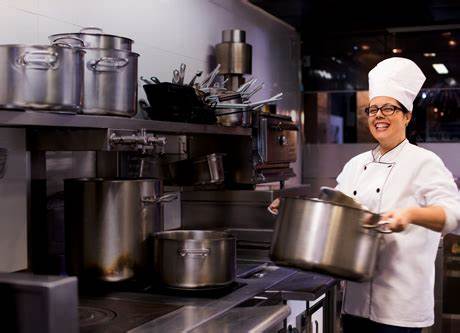
16 May Are commercial kitchens designed with ergonomics?
Kitchen staff, usually spend hours preparing different plates, but, what does that preparation consist of? Well, as part of their activities is working standing up, carrying heavy objects, raising or lowering heavy objects to a certain height. Many of those activities could create MSD (musculoskeletal disorders), and, why is this happening?
Most of the restaurants, do not implement ergonomics in the workplace. If we enter in a restaurant kitchen, we will be able to observe that they don’t have a footrest under worktables, the height of the shelves where the pots are placed are too high for some people, the sink is low and deep, that, forces to be working with the neck inclined. In places, where you must work standing, there are no anti-fatigue mats, actions, that can create a temporary or permanent ergonomic injuries at the time that they cutting, dicing, mincing, mixing, peeling, slicing or serving food.
According to my experience, if we want an ergonomic kitchen, we must consider the following:
- Implement an ergonomic analysis, based on the methodologies corresponding to the workplace
- Have an anthropometric database, and based on the results of percentiles, to place the furniture and accessories according to the heights, clearances and reach of the personnel
- We must consider good lighting, especially in places such as the placement of orders (where the chef prepares the plates), in the food preparation and in the dishwashing areas
- Placing a horizontal bar under the work table, allow us to raise one foot, alternating with the other, in order not to form varicose veins in the legs.
- Use lifting techniques, in order to avoid limb pain.
- Staff rotation to avoid fatigue and stress.
Each establishment has a unique and nuanced approach to cooking, floor management, services and logistic. That’s the reason why we should consider ergonomics.
Ing. Fuad Georges Farah Piñón
CEO / Forensic ergonomics
contacto@ergoinova.com.mx
